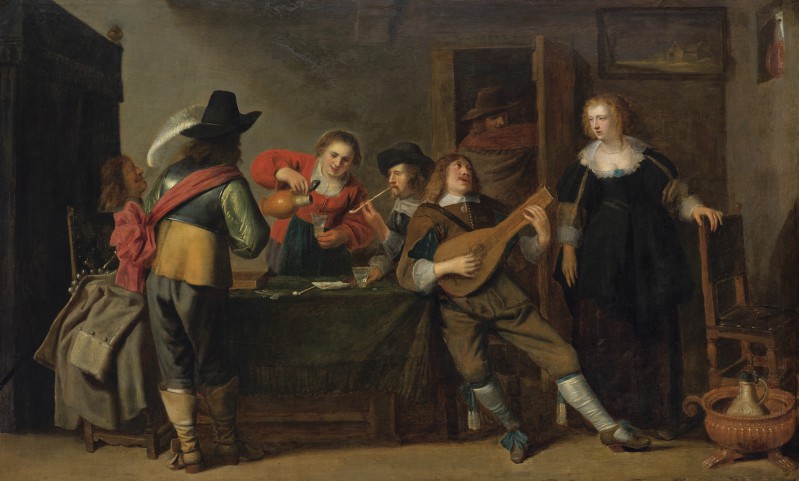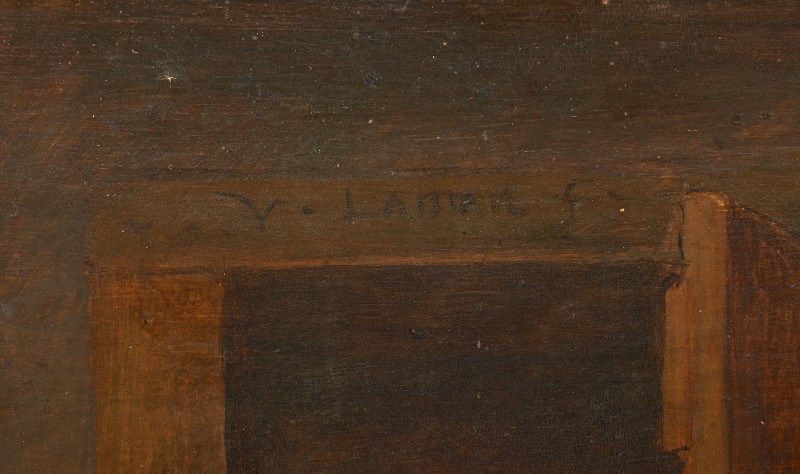Merry Company at the Table
- Date
- c 1635
- Object type
- painting
- Technique
- oil
- Material
- wood
- Dimensions
- 50,7 x 82,6 cm
- Location
- The Palace on the Isle - Picture Gallery, ground floor
- Marks and inscriptions
- signed V. Lamen f. on the door jamb
- Place of Origin
- Antwerpia (Belgium)
- Owner
- National Museum in Warsaw
- Acquisition name
- deposit; inv. no. M.Ob.2750
- Museum number
- Dep 521
Despite the signature, which was probably then barely visible, the painting was entered in the catalogue of the Stanisław August collection as the work of an anonymous artist ... .
The painting was published as by van der Lamen—and the signature quoted—by Janina Michałkowa in 1955. There are few known signed works by this artist. ...
Depictions of the vrolijk gezelschap (merry company) theme were first painted in c. 1610, among the Haarlem milieu of painters, such as Esaias van de Velde, Willem Buytewech, and Dirck Hals. They were genre scenes depicting representatives of the upper classes, usually gathered around a table, engaged in eating, drinking and dancing. Originally such scenes took place in a garden or on a terrace; in c. 1620, Willem Buytewech was the first to ‘bring’ them inside ... —and this formula was included permanently in Dutch genre painting. This type of representation is derived from the 16th-century engravings of moralizing messages showing the Gardens of Love, as well as from prints and painted depictions of the prodigal son (Luke 15: 11–32), in which a life devoted to worldly pleasures was reviled. ...
The iconography of the Warsaw Merry Company at the Table was analysed in detail by Hanna Benesz (Usłyszeć obraz. Muzyka w sztuce europejskiej od XV do początku XX wieku, exh. cat., B. Purc-Stępniak, G. Bastek et al., Gdańsk, Muzeum Narodowe, 2007, no. 170). Playing the lute—which symbolized femininity—was an allusion to foreplay, which the young gentleman and the woman standing next to him engaged in. This foreplay usually resulted in a dalliance which inevitably ended up in the bed standing alongside; an excess of alcohol led to forgetfulness and surrendering to bodily pleasures. The masked silhouette of the man in the background in the open doorway creates a somewhat sinister atmosphere over the carefree and cheerful scene. ... [See D. Juszczak, H. Małachowicz, The Stanisław August Collection of Paintings at the Royal Łazienki. Catalogue, Royal Łazienki Museum, Warsaw 2016, no. 58, pp. 227–228.]



